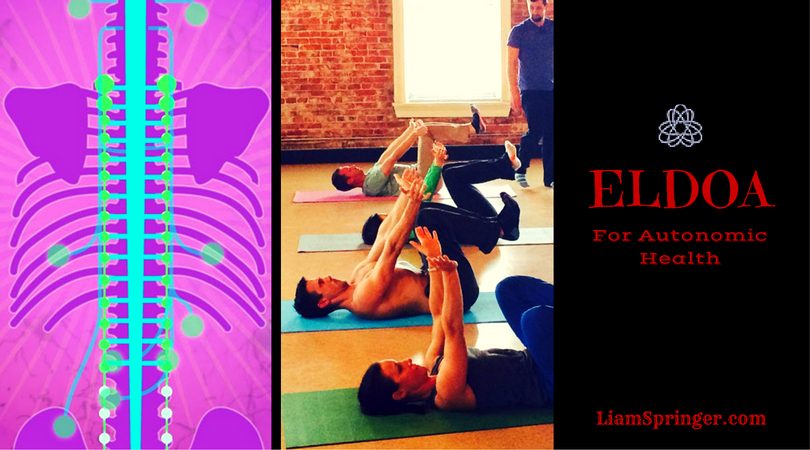
The autonomic nervous system is the portion of the nervous system that regulates your “vegetative function”—the actions of your organs which occur without conscious thought or effort. Involuntary body processes controlled by this system include: blood flow, heart beat, breathing rate, body temperature, hormone production, metabolism, digestion, bowel and bladder function, sexual response, and more. Keep reading to learn about the function of the autonomic nervous system, how it’s influenced by the spinal cord, and how to improve autonomic health with ELDOA.
Overview of the Autonomic Nervous System
The autonomic nervous system is divided into two major branches: the sympathetic and parasympathetic. The parasympathetic nervous system is associated with resource acquisition and tissue restoration. It regulates efficient digestion and energy utilization for long-term health. The sympathetic nervous system is associated with the fight-or-flight response. When activated, it shifts your body’s resource delivery away from the digestive tract and toward the adrenal glands and muscles, providing the ability to deal with an immediate threat. To put it simply, the sympathetic nervous system acts as the mediator of the autonomic tone—either taking charge itself, or releasing control to the parasympathetic branch.
The sympathetic and parasympathetic systems work hand in hand in all functions. Either branch, when overactive, will create symptomatic disease states (autonomic nerve disorders, anxiety, depression, etc.). Thus it is important to understand how these systems work—and what you can do to improve your overall autonomic health.
Sympathetic Nervous System
The sympathetic nervous system has a long string of ganglion (nerve cell cluster) which runs in two parallel strands down the front of the spinal cord and then connects in a single ganglion at the base of the sacrum—at the joint between the sacrum and coccyx. The relative placement of the vertebra, the tension and health of the discs, the movement of the sacrum, and the orientation of the coccyx all have fundamental influence over the structural tension, health, and function of the sympathetic nervous system.
Parasympathetic Nervous System
The vagus nerve is the major nerve of the parasympathetic nervous system. It has two ganglion which exit the cranium, travel down either side of the neck, wind around the esophagus, and then pass through the diaphragm before innervating the organs of the abdomen (including the heart and lungs). It is attached to the 10-12th rib and the upper lumbar vertebra. The placement of the vertebra and ribs, as well as the mobility of the ribs within the vertebral joints, are crucial for the structural tension and health of the diaphragm. And the posture of the cervical spine and cranium are critical for the esophagus. These structures must be in balance in order to promote a healthy balance of tension and compression in the vagus nerve.
How to Improve Autonomic Health with ELDOA
Spinal health in general is key for improving autonomic health. The position, movement, and health of the spinal cord significantly influence the health and function of the sympathetic and parasympathetic nervous systems. The ELDOA method of exercise is great for improving both spinal and autonomic health, because the exercises can target specific structures such as the lumbar spine, the ribs and related vertebra, and the cervical spine. If a particular part of your posture is in need of balancing, specific ELDOA exercises can be selected to bring balance to the nerves. Additionally, SomaTraining exercises for the strengthening and stretching of the diaphragm can significantly increase autonomic health, by regulating the health and tone of the two major branches of the autonomic nervous system.
This is just one way to understand how the ELDOA method can aid in bringing holistic functional balance and health to the body. To learn more, check out my previous posts on ELDOA for Athletes, ELDOA for Healthy Heart, Lungs, and Organ Function, and How to Increase Brain Health with ELDOA.
Ready to give it a try? Sign up for ELDOA group classes here!
Interested in receiving more in-depth info on the latest topics in nutrition and fitness? Sign up for my monthly newsletter.







